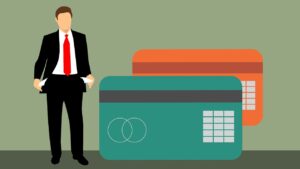Online banking is the ability to manage your bank accounts with a computer or mobile device. This could include transferring funds, paying bills and depositing checks electronically.
As a result of the digital-age that we are living in, these days there is no need to visit a bank branch. With online banking, you can do all of your banking tasks when it’s most convenient for you, including outside of normal banking hours.
Online banking follows the trend of Fintech ideas that are revolutionising the world of finance. Lending is another form of fintech that, thanks to technological advances, can now be done fully online.

What is Online Banking and How Does it Work?
With the existence of online banking, consumers aren’t required to visit a bank branch to complete most of their basic banking transactions. These days, you can complete those mundane tasks that would usually involve waiting in-line at a bank branch all from your own home.
Banking online means accessing your bank account and carrying out financial transactions through the internet on your smartphone, tablet or computer.
Online banking is quick, usually free and allows you to do tasks, such as paying bills and transferring money, without having to visit or call your bank.
Dangers of Online Banking
In some respects, online banking is more secure than traditional banking, as you can have your pay directly deposited into your bank account, which eliminates the risk of someone stealing your check from the mail.
Plus, no one can copy your account information from checks that you send out; bank computers send that information back and forth securely, without storing it.
Although online banking security is continually improving, such accounts are still vulnerable when it comes to hacking. Consumers are advised to use their own data plans, rather than public Wi-Fi networks when using online banking, to prevent unauthorized people from accessing their accounts.
Additionally, online scams such as phishing schemes that get you to divulge important information through email or text message are a cause for concern. However, as long as you send information only to people you trust, and through authentic websites, you can avoid these types of schemes.
Pros and Cons of Online Banking
Advantages
The first major pro of online banking is the sheer convenience of it. Basic banking transactions such as paying bills and transferring funds between accounts can easily be done 24 hours a day, seven days a week, wherever a consumer wishes.
Additionally, consumers can open and close a number of different accounts online, from fixed deposits to recurring deposit accounts that typically offer higher rates of interest.
Consumers can also monitor their accounts regularly closely, allowing them to keep their accounts safe, and if any fraudulent activity occurs, you will be able to recognise it very quickly.
Disadvantages
The main disadvantage that comes with online banking is the lack of customer, or face-to-face support. Many banks offer phone-based customer service and some offer assistance via social media and online chat, but this process can often be slower than in a physical bank branch.
In addition, cash can be hard to deposit with online banking. You may have to find a deposit-accepting ATM to get around this difficulty, or you may need to put money into a traditional bank account and transfer it to your online account. You could also use cash to buy a money order, and then deposit it electronically using your online bank’s mobile app.
Lastly, as mentioned before, online banking comes with an element of trust – whilst you will be able to spot any fraudulent activity more quickly, using an unencrypted wifi connection could leave you vulnerable to hackers. Also, people are more vulnerable to phishing scams as a result of online banking practices.
What is Online Lending?
Broadly speaking, online lending is any kind of loan that’s not directly from a traditional bank.
You can get all sorts of different types of loans online in this day and age. At Dime Alley, we offer payday loans and installment loans using a fully online process. An application takes just 5 minutes to complete and you could have the funds in your account in as soon as one hours time!
Other types of online lending include;
- Mortgages;
- Personal Loans;
- Short-term Loans.